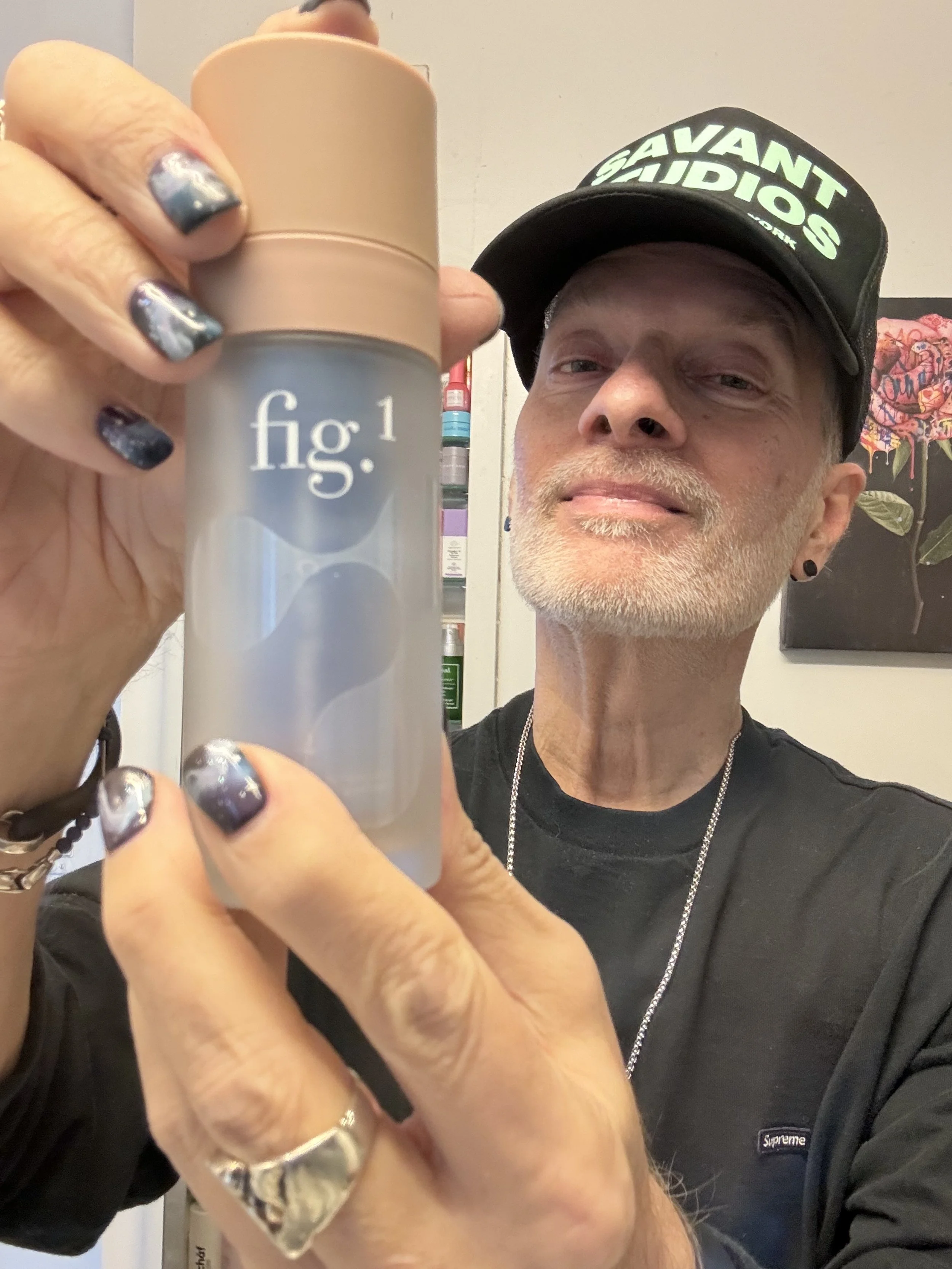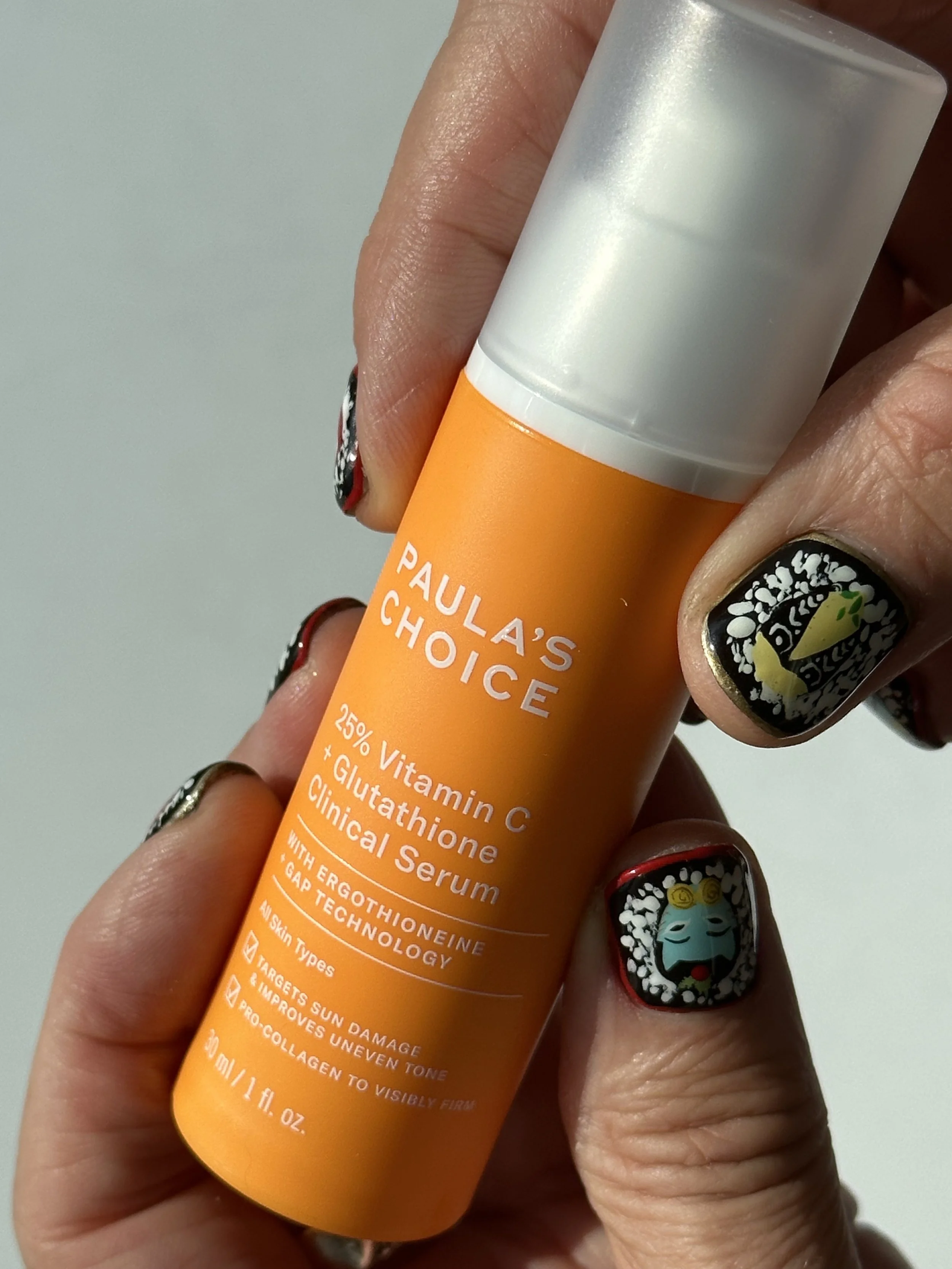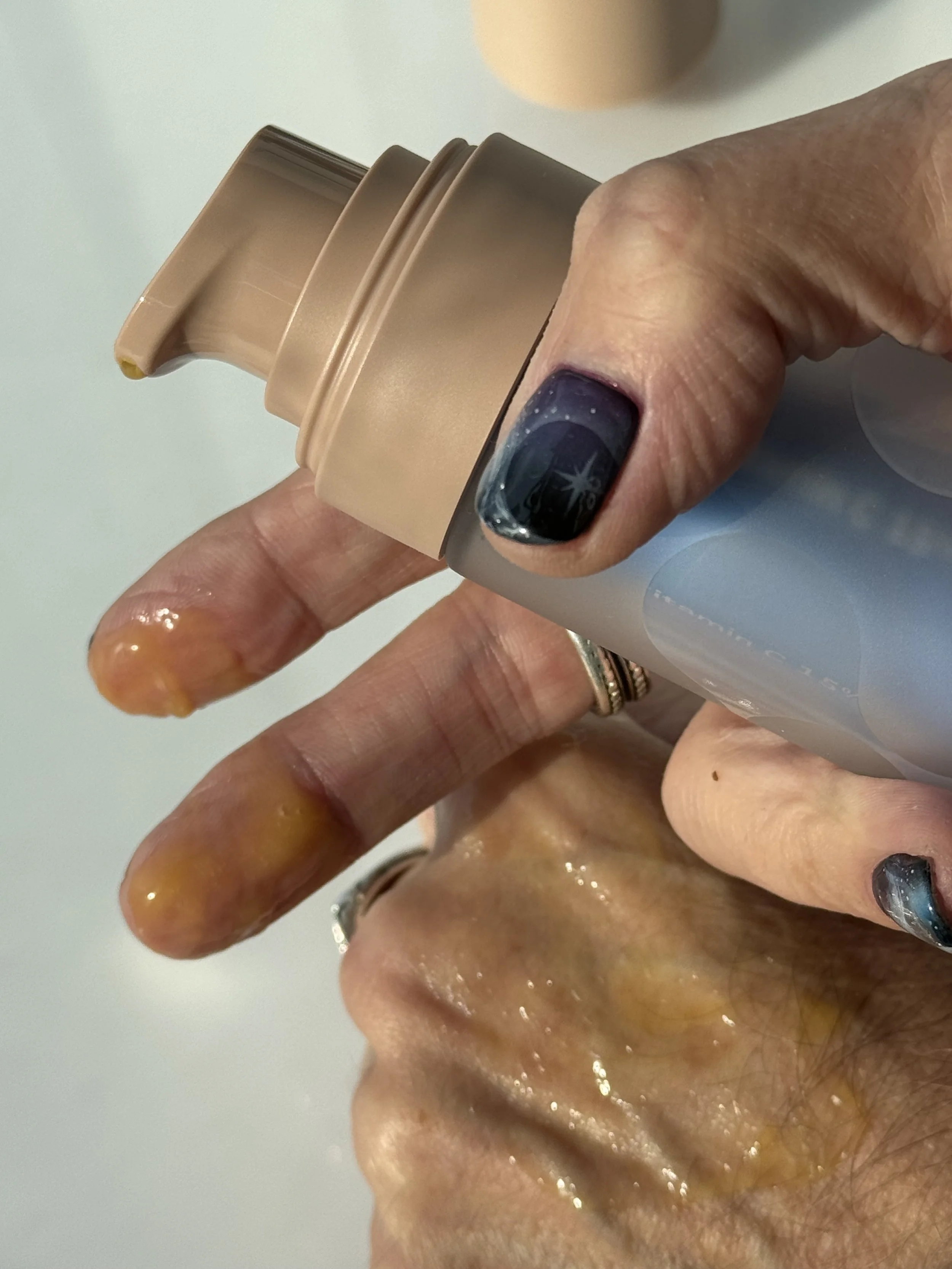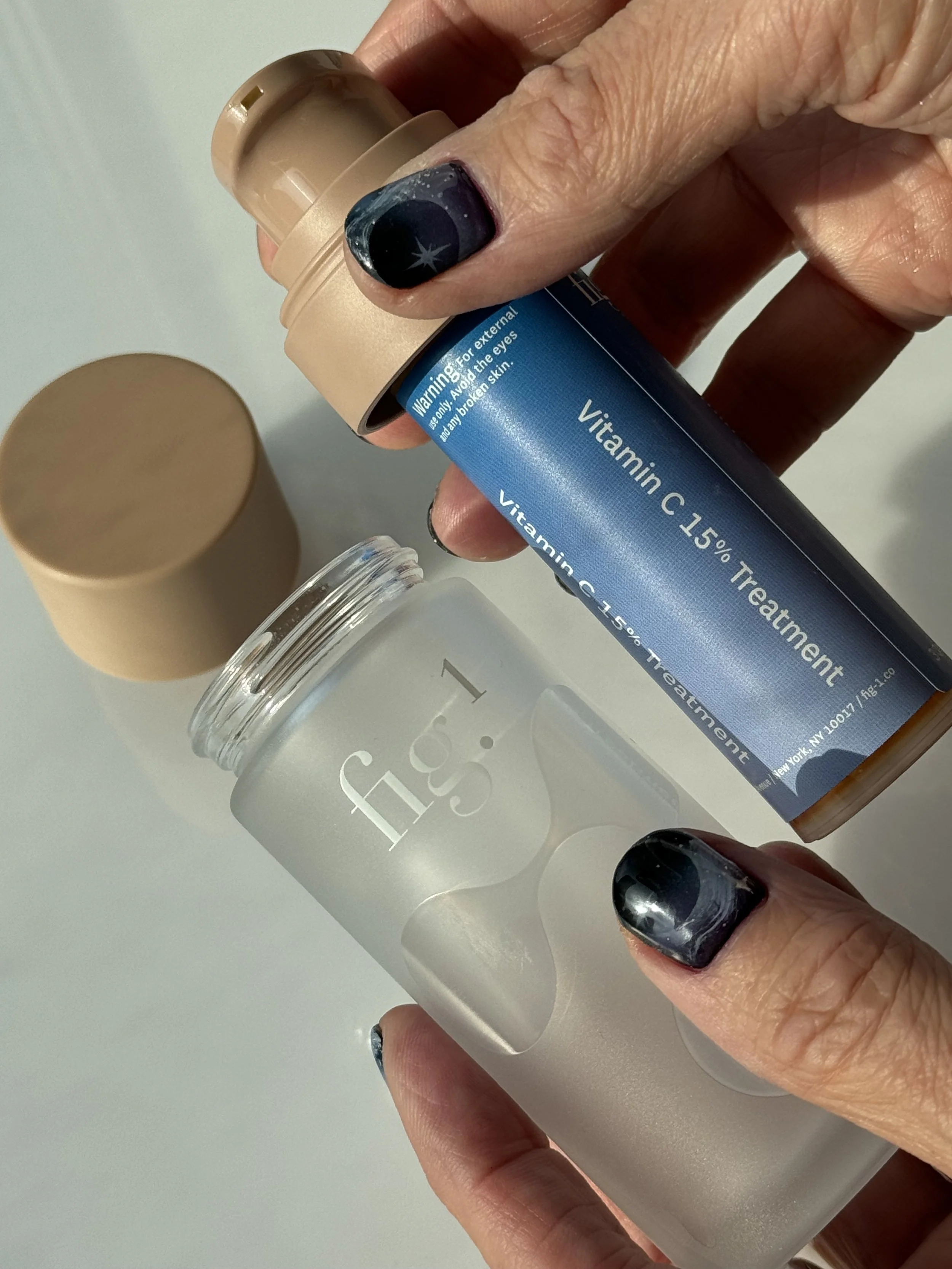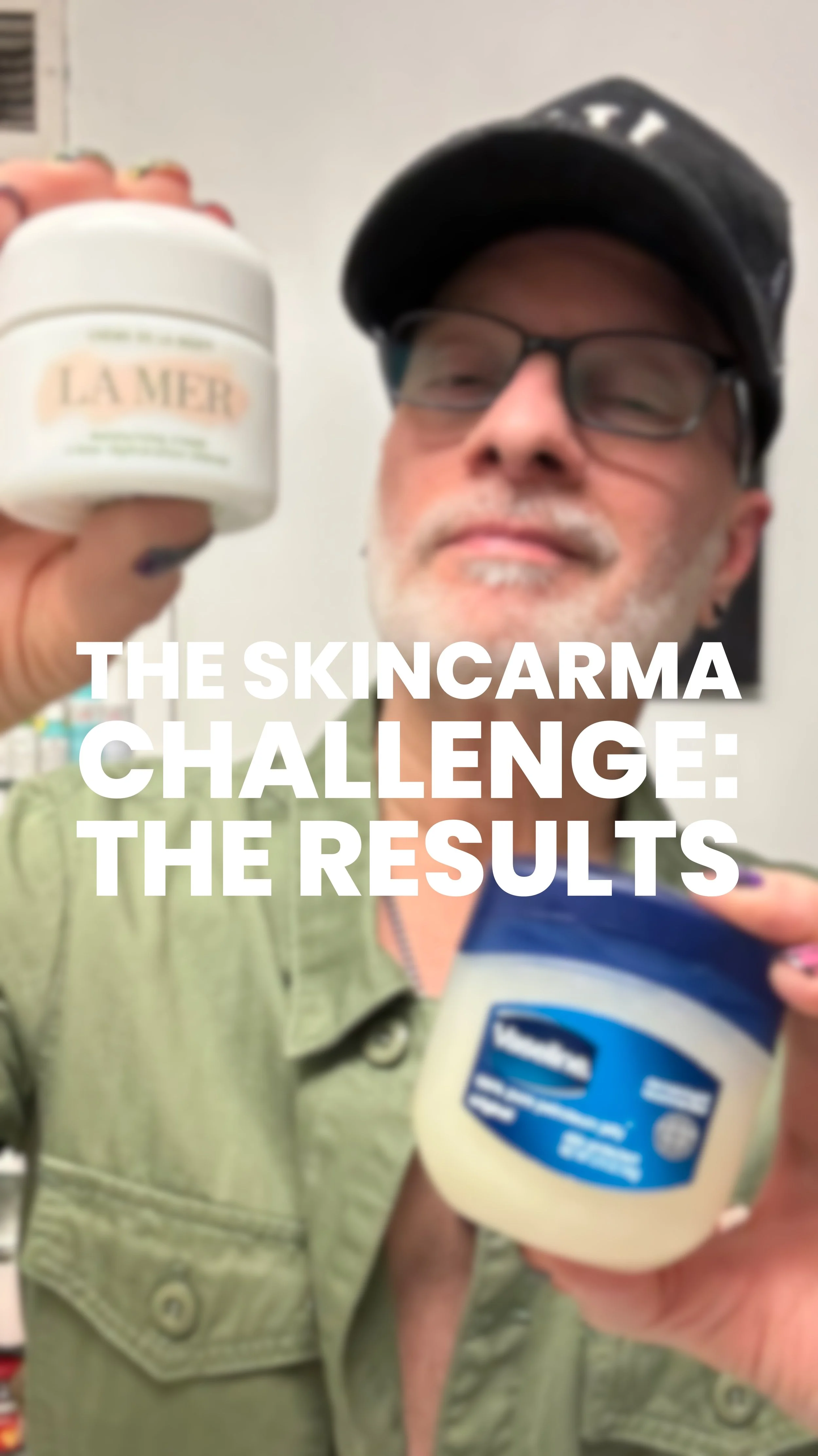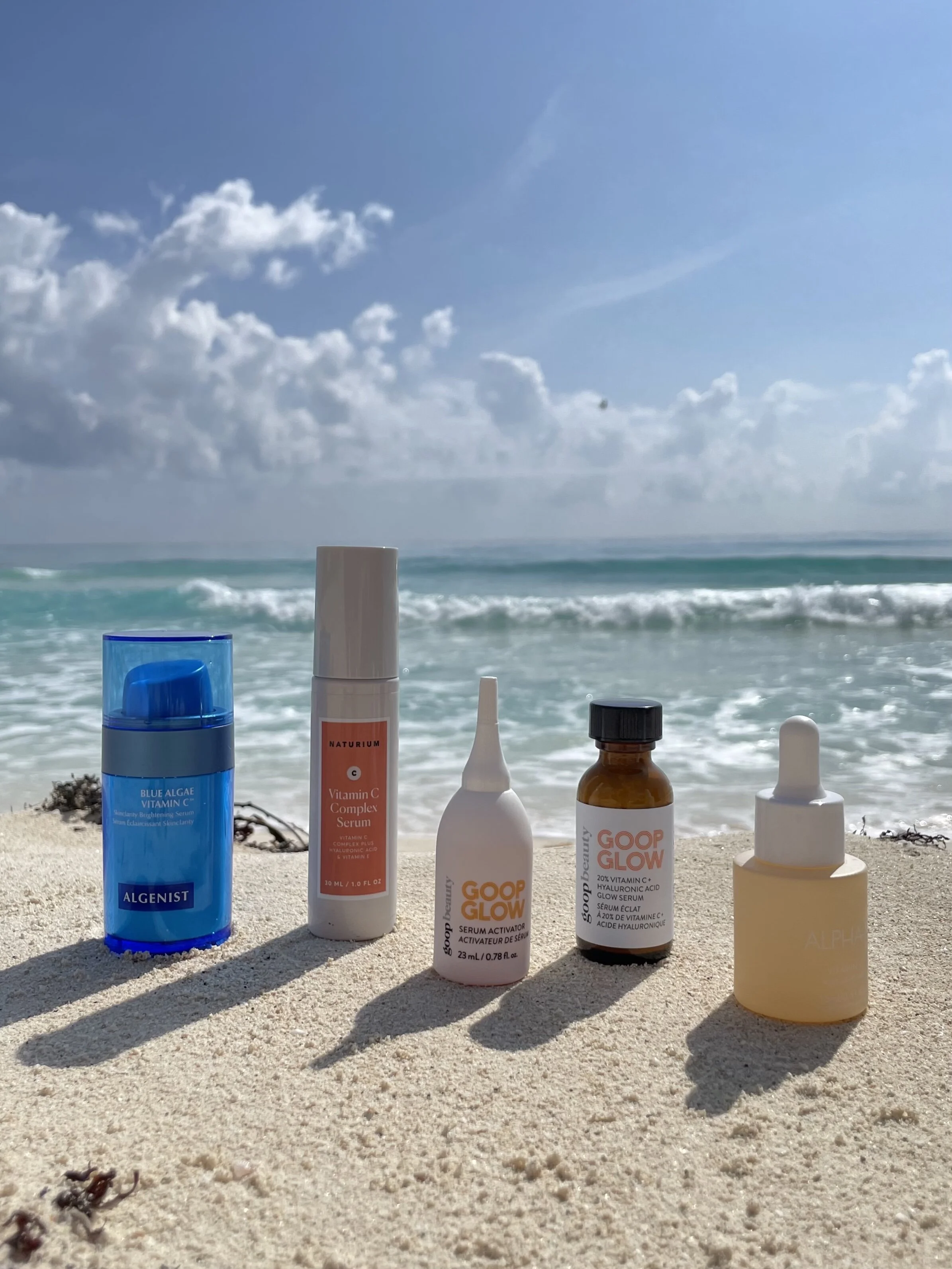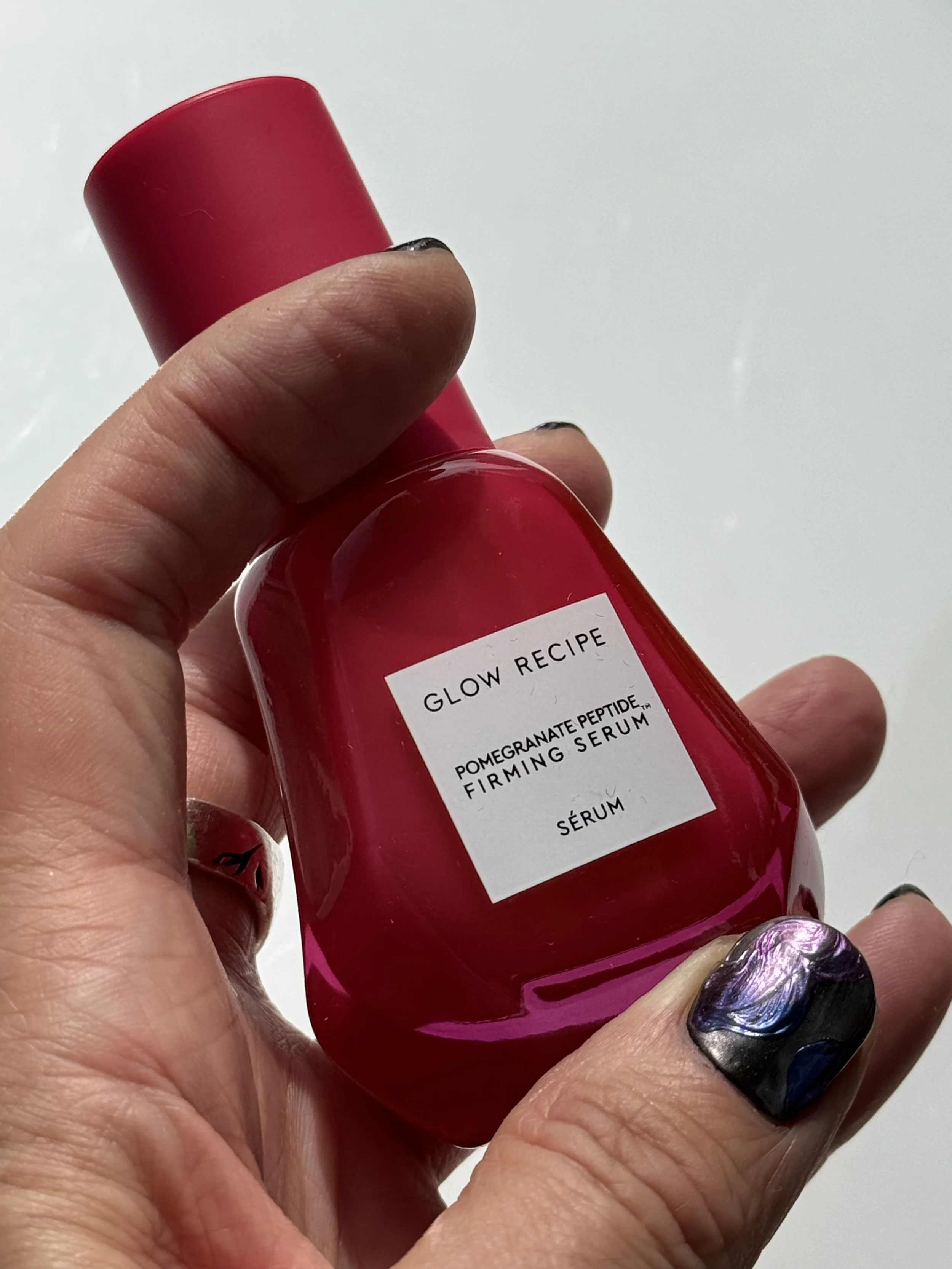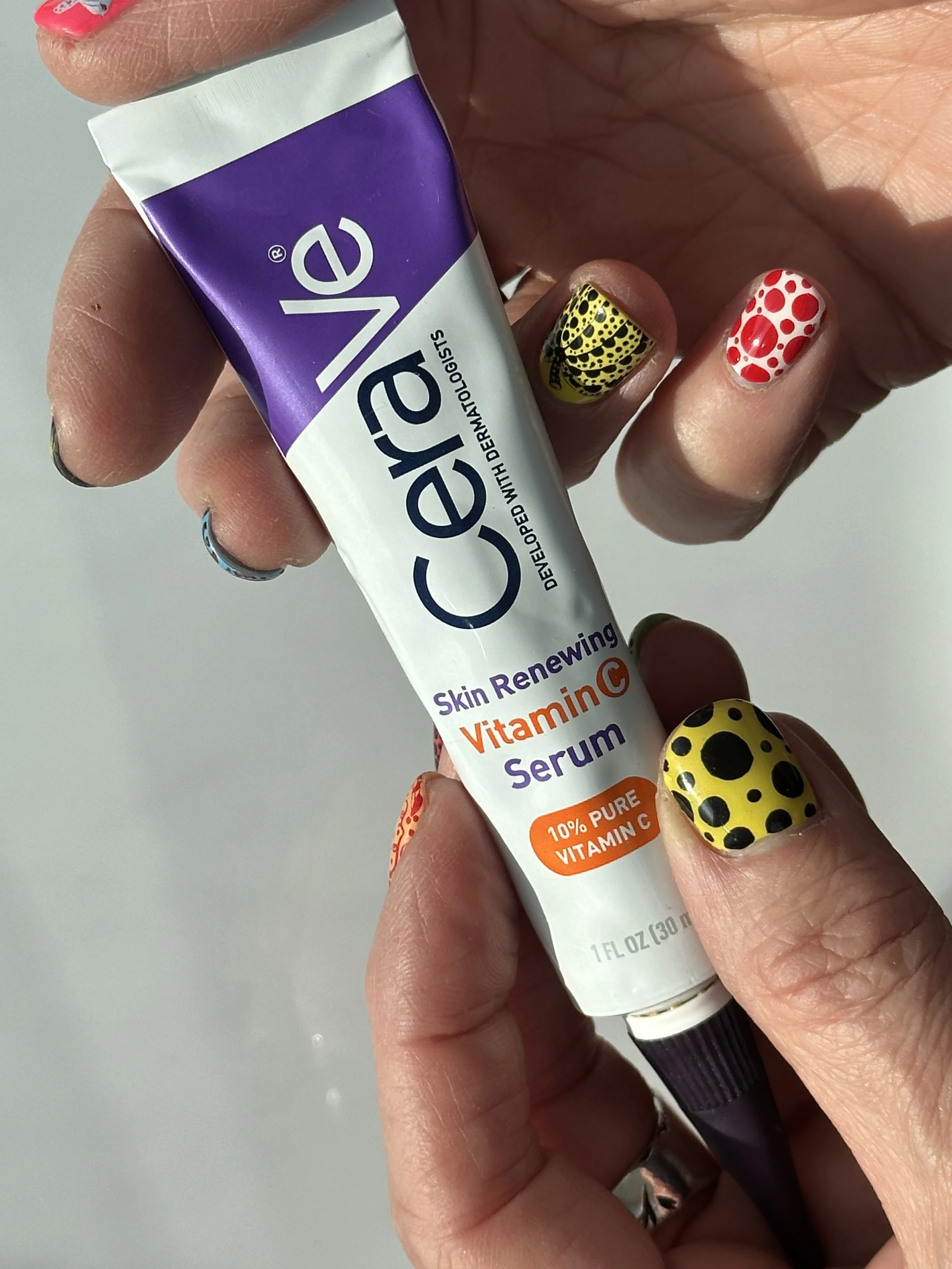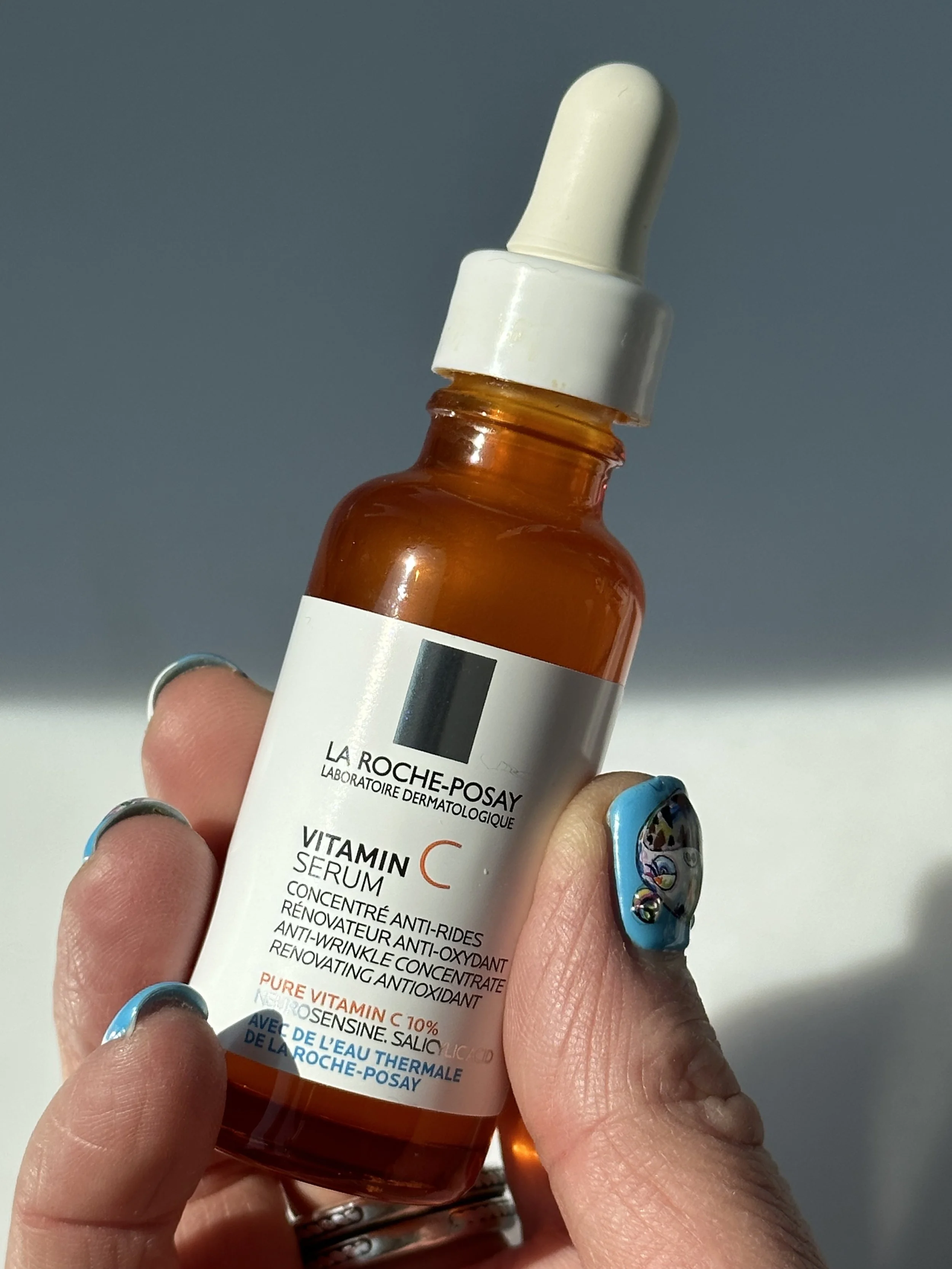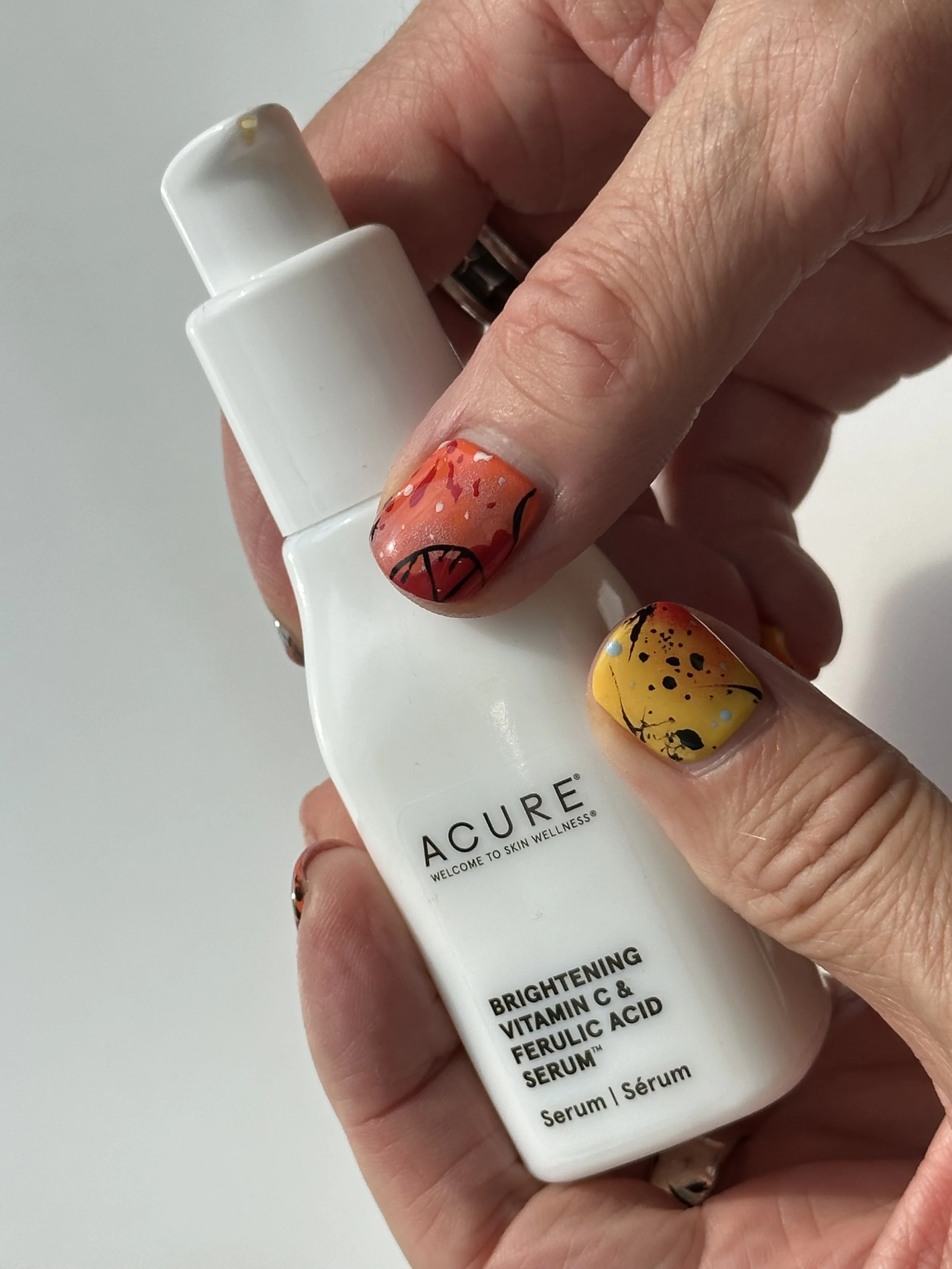PRODUCT REVIEW: FIG.1 VITAMIN C 15% TREATMENT - What should not be mixed with vitamin C? Can sensitive skin use vitamin C? What is Ferulic Acid
FIG.1 VITAMIN C 15% TREATMENT
People are picky when it comes to Vitamin C face serums. It’s wild how polarizing a skincare product can be! I can’t tell you how often I’ve heard friends say how much they hate a particular Vitamin C serum, though. And those same people are just as often obsessed with the one they do like. They’re often resistant to trying something new.
I worked for Kiehl’s, inside the wild world of L’Oreal, for more than 7 years. And we all knew that the C E Ferulic Vitamin C serum from sister brand SkinCeuticals had become an industry icon. At the time, there simply was nothing like it on the market.
I bring up the legendary SkinCeuticals C E Ferulic because I have several industry friends who remain obsessed with it and refuse to part with it. That’s despite the fact that the formula is nearly 20 years old and is now $182. Sure, it remains among the best Vitamin C serums; but there are numerous antioxidant serums with Vitamin C today that are just as good – and at a fraction of the price.
Psst…catch product reviews of my top picks of the best Vitamin C serums on the blog here.
Among the best Vitamin C serums available today are the new Paula's Choice 25% Vitamin C + Glutathione Clinical Serum – which is my current go-to. I’m also a big fan of The Ordinary’s Ethylated Ascorbic Acid 15% Solution and Sunday Riley’s C.E.O. 15% Vitamin C Brightening Serum – perhaps the most pleasurable every made.
Over the past several weeks, I’ve incorporated the Fig.1 Vitamin C 15% Treatment into my skincare routine and come to realize it’s not only among the best overall Vitamin C face serums, but it’s actually one of the best dupes for the iconic SkinCeuticals C E Ferulic. More on Fig.1’s superb antioxidant Vitamin C serum with Ferulic Acid below…
BEST VITAMIN C SERUMS & FACE CREAMS
Is SkinCeuticals’ C E Ferulic worth it?
Twenty years ago it was – without a doubt. What made SkinCeuticals’ C E Ferulic so exceptional is that, until it was introduced in 2005, there were no high-potency Vitamin C serums available – or even possible. Pure Vitamin C is notoriously unstable in the presence of water, light and air. Formulating with it at high concentrations was a chemist’s nightmare – and not commercially viable.
With a 15% concentration of Ascorbic Acid, SkinCeuticals achieved a level of efficacy for an antioxidant Vitamin C serum that no company had ever come close to. In fact their process for stabilizing such a high concentration of Vitamin C in a formula has been patented. U.S. Patent No. 7,179,841 covers the company’s breakthrough antioxidant complex featuring 15% pure Vitamin C (L-ascorbic acid), 1% Vitamin E and Ferulic Acid.
While the patent highlights the unique and proprietary nature of the C E Ferulic formulation developed by SkinCeuticals’ founding scientist Sheldon Pinnell, M.D., the process of stabilizing Vitamin C at high concentrations is itself not proprietary – nor is the use of Ferulic Acid and Vitamin E to keep it stable. Today, there are numerous well-formulated antioxidant Vitamin C serums available.
PRODUCT REVIEW: PAULA'S CHOICE 25% VITAMIN C + GLUTATHIONE CLINICAL SERUM
“Despite the belief that other powerhouse ingredients such as niacinamide and retinol can counteract or nullify the effects of vitamin C, that simply is not the case – in fact, using these ingredients together only enhances their effectiveness.”
Vitamin C is perhaps the most effective and unsexy ingredient used in skincare. And because it feels so common, a lot of people make the mistake of skipping it from their skincare routine.
I blame skincare marketers and the Flintstones. Yes, the cartoon. Because we’re conditioned from a young age to take vitamins like Flintstones Chewables, vitamins feel childish and common. And skincare marketers aren’t paid to push what’s common. They’re paid to push innovation – whether it’s conceived in a lab or conceived in a marketing meeting.
But the benefits of Vitamin C for your skin and, more broadly, your skin health are anything but common – and cannot be overstated. When applied topically, a Vitamin C face serum provides a multitude of beneficial actions, beginning with the active’s ability to brighten your skin and even out your skin tone. By inhibiting the production of melanin, Vitamin C helps to fade discoloration, dark spots, and other forms of hyperpigmentation to unify (and illuminate!) your complexion.
Additionally, when used consistently, high concentrations of Vitamin C promotes collagen synthesis to help firm and plump your skin, while improving its elasticity. And perhaps most importantly, Vitamin C possesses potent antioxidant activity on the skin to help prevent photoaging resulting from environmental exposure.
CATCH THIS NEW VITAMIN C SERUM IN ACTION!
Before I get into my detailed Fig.1 Vitamin C 15% Treatment product review just below, I wanted to explore some of the most frequently asked questions about using a Vitamin C face serum as well as the unique benefits and characteristics of Ferulic Acid.
1. What should not be mixed with vitamin C?
One of the great mysteries of skincare surrounds the usage of Vitamin C and what you can, can’t, and shouldn’t mix it with.
There are very few ingredients that are problematic when mixed with Vitamin C in the same product or the same skincare routine. Most of the ingredients to stay away from result from the potential for irritation. Nothing more than that.
The most important of these conflicts is when pairing Vitamin C with acids like AHAs; notably, Glycolic Acid and Lactic Acid – the two most potent of the alpha hydroxy acids. Mixing high concentrations of Vitamin C, as well as retinoids like Retinol, with AHAs is almost always playing with fire. The combination can very easily lead to irritation and skin sensitization.
There is some evidence that Benzoyl Peroxide can potentially oxidize Vitamin C, which renders it ineffective – or at least diminishes its efficacy. The world won’t come to and end if you do use them together. But it’s a good idea to simply use them in separate routines with Vitamin C in the AM and Benzoyl Peroxide in the PM. Or on alternate days, if possible.
The myth that you cannot use Retinol or Niacinamide with Vitamin C is just that – a myth. There’s an excellent article from the Paula’s Choice research team here that explores the benefits of using Vitamin C and Niacinamide together. Psst…they make each other better! I actually use both twice a day and I have excellent skin quality and a relatively even skin tone. #ijs
Explore my picks of the best Vitamin C serums on the blog here.
Sources: Refinery29: You’re Wasting Money On Skincare Ingredients That Don’t Go Together; Paula’s Choice: Niacinamide With Vitamin C
2. Can sensitive skin use vitamin C?
In general, Vitamin C has been proven safe for sensitive skin, but individual sensitivity can vary. Only you know your skin! Many people find that a particular Vitamin C face serum can be irritating. Often, it has to do with the formulation itself or the higher concentration of Vitamin C in the formula.
The most common form of Vitamin C to sensitize skin or cause signs of irritation is pure Vitamin C or Ascorbic Acid – particularly at levels of 10-15% or higher. Many of the most popular Vitamin C serums are formulated with very high concentrations of Ascorbic Acid; among these are the Drunk Elephant C-Firma Fresh Day Serum, Paula’s Choice C15 Super Booster and, of course, the iconic SkinCeuticals C E Ferulic.
Because the benefits of the active are unparalleled, the key is to find a Vitamin C serum that works for you, rather than avoiding Vitamin C entirely. If you believe you have a sensitivity to Vitamin C, seek out a serum with a derivative of Vitamin C like Ascorbyl Glucoside or Tetrahexyldecyl Ascorbate (THD). The Ordinary’s Ascorbyl Glucoside Solution 12% and the new Paula's Choice 25% Vitamin C + Glutathione Clinical Serum are superb options.
More importantly, avoid products with fragrance and drying alcohol, both of which are known to sensitize skin. Often marketers and formulators like to scent a Vitamin C serum to smell like oranges. The way they achieve that is through fragrance or fragrant plant oils; both cause skin sensitivity and signs of irritation.
Explore my picks of the best Vitamin C serums on the blog here.
Sources: Paula’s Choice: Vitamin C for Skin: Benefits, Forms & Uses; Byrdie: 5 Vitamin C Alternatives for Those With Sensitive Skin
3. What is Ferulic Acid?
Ferulic Acid is a natural phenolic compound found in various plants, notably seeds, grains, some grasses and leaves. It is highly regarded for its potent antioxidant activity and its ability to enhance the stability and efficacy of other antioxidants, particularly Vitamin C and Vitamin E.
Ferulic Acid has been studied for its exceptional benefits in skincare, including its ability to protect against UV damage, prevent the effects of photoaging, and improve overall skin health.
Most importantly, Ferulic Acid is used to help stabilize Vitamin C in a water-based face serum, allowing the notoriously unstable active to remain potent and effective. It has also been shown to enhance the antioxidant activity of other ingredients including Vitamin C and Vitamin E, providing additional protection against free radical damage and oxidative stress.
Explore my picks of the best Vitamin C serums on the blog here.
Sources: Medical News Today: What to know about ferulic acid; The Derm Review: Ferulic Acid In Skincare: Everything You Want To Know About Ferulic Acid; Marie Claire: Ferulic Acid: A Dermatologist's Guide
4. What does Ferulic Acid do for the skin?
Ferulic Acid is an important antioxidant used in many anti-aging face serums. It is most often found in Vitamin C serums as it is commonly relied upon to stabilize the notoriously unstable vitamin, allowing Vitamin C to sustain its efficacy and potency for longer.
On its own, Ferulic Acid offers a range of benefits for maintaining and improving skin health. As one of the most powerful natural antioxidants, it can play a crucial role in neutralizing free radicals – unstable atoms that cause skin cell damage and subsequent photoaging.
This protective action helps in reducing the appearance of premature skin aging and damage caused by ultraviolet (UV) rays and pollution.
Another key benefit of Ferulic Acid is its ability to diminish the appearance of dark spots and help unify and brighten the complexion. How does Ferulic Acid brighten the skin? Well, it has the ability to inhibit the enzyme tyrosinase, which is responsible for some pigmentation concerns. This makes it a valuable component in a skincare routine focused on addressing uneven skin tone and enhancing your overall complexion.
While Ferulic Acid is generally well-tolerated, some individuals with sensitive skin may experience mild irritation or other reactions. As with Vitamin C and several potent skincare actives, reactivity is specific to the individual and may be attributable to other ingredients in a given formula, notably fragrance, fragrant plant oils and drying alcohols. These should always be avoided in products used on your face.
Explore my picks of the best Vitamin C serums on the blog here.
Sources: Medical News Today: What to know about ferulic acid; The Derm Review: Ferulic Acid In Skincare: Everything You Want To Know About Ferulic Acid; Marie Claire: Ferulic Acid: A Dermatologist's Guide
5. Product Review
Fig.1 Vitamin C 15% Treatment Review
As I said at the outset, Vitamin C face serums are among the most polarizing of all skincare products. And they’re very rarely pleasurable, particularly when the formula features a high concentration of Ascorbic Acid, the pure form of Vitamin C.
The most pleasurable Vitamin C serums either use lower concentrations of the active or a weaker derivative, which is often not as effective. And many of them rely upon a sensorial masking scent, most often orange, made possible by the inclusion of fragrance or fragrant plant oils like Orange Peel Oil – a guaranteed skin irritant at high concentrations.
Regrettably, while I love using Sunday Riley’s C.E.O. 15% Vitamin C Brightening Serum, it does contain Citrus Aurantium Dulcis (Sweet Orange) Oil, a known skin irritant. And it’s not at an insignificant level in the formula – which is precisely why it smells like fresh-squeezed oranges! If you have sensitive skin, it’s not the one for you.
Vitamin C serums with 15% Ascorbic Acid are often very sticky – and they often have a pungent “Vitamin C odor.” Not fun. But the Fig.1 Vitamin C 15% Treatment with 15% Ascorbic Acid is a rare exception. It’s quite simply one of the most potent and pleasurable brightening serums with Vitamin C that I’ve come across.
It’s remarkable to me that Fig.1’s 15% Vitamin C serum doesn’t smell like a 15% Vitamin C serum. If you’ve tried C E Ferulic, the classic Paula’s Choice C15 Super Booster or even the Drunk Elephant C-Firma Fresh Day Serum then you know what I’m referring to. That acerbic, off-putting scent.
The Fig.1 Vitamin C 15% Treatment isn’t loaded up with masking fragrances like Sunday Riley’s iconic serum; but it does have a tiny amount of Vanillin, a compound derived from vanilla beans, as the last ingredient. According to the experts at WIMJ, it’s less than 0.05% – at such a low level as to be inconsequential.
What does it smell like if not Ascorbic Acid? Well, it just smells like its ingredients – a cocktail of pro-skin health actives! It’s not odorless, but it’s also not off-putting.
In addition to 15% L-Ascorbic Acid, the Fig.1 formula contains 1% Vitamin E and 0.5% Ferulic Acid – the exact levels of each in the $182 SkinCeuticals C E Ferulic. At just $38 (and refillable for $33!), you can buy 5 of them!
Despite the fact that it’s water-based, the Fig.1 Vitamin C 15% Treatment isn’t a very watery serum. It’s more silky and slightly opaque, yet still relatively easy to layer – which I do as part of my ABC routine in the PM. The Skincarma ABC comprises three serums: a Retinol (Vitamin A) serum, a Vitamin C serum and a Niacinamide (Vitamin B3) serum.
In the morning, I layer it after my Paula’s Choice 10% Niacinamide Booster serum and before a peptide serum like the Glow Recipe Pomegranate Peptide Firming Serum and moisturizer with SPF.
There are also four non-fragrant plant oils with antioxidant and anti-aging properties: Meadowfoam Seed Oil, Evening Primrose Oil, Grape Seed Oil and Borage Seed Oil. Along with humectant Glycerin, these give the product a denser viscosity – and elevate its antioxidant efficacy over competitive Vitamin C serums.
I’m more than a little obsessed with the Fig.1 Vitamin C 15% Treatment and feel like I’ve discovered an insider secret. I’m ngl I scoff a bit at those industry friends still wasting hundreds of dollars on a decades-old formula…
6. Pros & Cons
What I like about it: The Fig.1 Vitamin C 15% Treatment is one of the best antioxidant serums with 15% Vitamin C that I’ve come across. I love that it’s more pleasurable than most similar high-potency serums and doesn’t have that awful acerbic Ascorbic Acid odor. For just $38, it’s a legitimate dupe for the iconic $182 SkinCeuticals C E Ferulic. Like legit! And, you can refill your glass bottle for just $33.
What I don’t like about it: I like everything about it.
Who it’s for: All skin types.
SHOP THE BLOG: Want to try it for yourself? Purchase the Fig.1 Vitamin C 15% Treatment for $38 here.
The Ingredient List of the Fig.1 Vitamin C 15% Treatment:
 aox|sb|buff, Glycerin
aox|sb|buff, Glycerin  sii|h 0 0, Sodium Polyacryloyldimethyl Taurate vc, Propanediol solv|h, Tocopherol
sii|h 0 0, Sodium Polyacryloyldimethyl Taurate vc, Propanediol solv|h, Tocopherol  aox 0-3 0-3, C13-15 Alkane solv|emo, Pentylene Glycol solv|h, Potassium Hydroxide buff, Limnanthes Alba (Meadowfoam) Seed Oil
aox 0-3 0-3, C13-15 Alkane solv|emo, Pentylene Glycol solv|h, Potassium Hydroxide buff, Limnanthes Alba (Meadowfoam) Seed Oil  emo, Oenothera Biennis (Evening Primrose) Oil
emo, Oenothera Biennis (Evening Primrose) Oil  so|emo 2 3, Vitis Vinifera (Grape) Seed Oil
so|emo 2 3, Vitis Vinifera (Grape) Seed Oil  aox|emo, Borago Officinalis (Borage) Seed Oil
aox|emo, Borago Officinalis (Borage) Seed Oil  so|emo, Ferulic Acid
so|emo, Ferulic Acid  aox|amic, Triolein vc, Phenethyl Alcohol, Ceramide NP
aox|amic, Triolein vc, Phenethyl Alcohol, Ceramide NP  sii, Glyceryl Dioleate emo, Caprylic/Capric Triglyceride emo, Disodium EDTA chel, Linoleic Acid
sii, Glyceryl Dioleate emo, Caprylic/Capric Triglyceride emo, Disodium EDTA chel, Linoleic Acid  sii|emo|surf, Phospholipids
sii|emo|surf, Phospholipids  sii|emo, Phytosterols, Malonic Acid buff, Vanillin
sii|emo, Phytosterols, Malonic Acid buff, VanillinTHIS PAULA’S CHOICE SUNSCREEN IS EVERYTHING!
IS IT REALLY A SCAM?
Find out on my TikTok channel.
MY TOP VITAMIN C PICKS: VITAMIN C SERUMS I’M CRUSHING ON FROM ALGENIST, NATURIUM AND MORE
WATCH MY VIDEO REVIEW
THE BEST NIACINAMIDE SERUMS FOR CLOGGED PORES AND A BRIGHTER COMPLEXION
ON MY YOUTUBE CHANNEL HERE
WATCH MY VIDEO REVIEW OF
SKINCARE HACKS: GLYCOLIC ACID IS THE NATURAL DEODORANT THAT WORKS!
ON MY YOUTUBE CHANNEL HERE
WATCH MY VIDEO REVIEW OF
MY FAVORITE HUMECTANT SERUMS FROM PAULA'S CHOICE, THE INKEY LIST, GHOST DEMOCRACY AND MORE
ON MY YOUTUBE CHANNEL HERE
WATCH MY VIDEO REVIEW
COOL CLEAN FACIAL SUNSCREENS TO KEEP US SAFE AND SMILING IN THE SUN!
ON MY YOUTUBE CHANNEL HERE
WATCH MY VIDEO REVIEW
THE OPULUS BEAUTY LABS RETINOL SYSTEM – THE COOLEST RETINOL INNOVATION I’VE EVER SEEN
ON MY YOUTUBE CHANNEL HERE
WATCH MY VIDEO REVIEW
MY 2021 VITAMIN C PICKS + THE BEST VITAMIN C SERUMS TO BRIGHTEN UP THE COMPLEXION!
ON MY YOUTUBE CHANNEL HERE
WATCH MY VIDEO REVIEW OF
MY WINTER SKIN SAVIOR: SKINFIX BARRIER+ LIPID REPLENISHING SKINCARE
ON MY YOUTUBE CHANNEL HERE
WATCH MY VIDEO REVIEW
A COMPLETE K-BEAUTY ROUTINE WITH THE BEST FACIAL SKINCARE FROM PURITO, COSRX, MISSHA & MORE!
ON MY YOUTUBE CHANNEL HERE
WATCH MY VIDEO REVIEW
THE YEAR’S BEST VITAMIN C SERUMS WITH PAULA'S CHOICE, SUNDAY RILEY, THE INKEY LIST AND MORE!
ON MY YOUTUBE CHANNEL HERE
WATCH MY VIDEO REVIEW OF
A SELFCARE SUNDAY NOT FOR THE FAINT OF HEART – WITH THE PAULA’S CHOICE 25% AHA PEEL!
ON MY YOUTUBE CHANNEL HERE



